Did you know that June 18th is celebrated as International Sushi Day?
With the sole aim of encouraging people around the world to explore and enjoy different kinds of sushi, International Sushi Day was started by Chris DeMay in 2009. For a country like India which loves its masalas and everything spicy, the love for sushi comes as a bit of surprise. First, the flavors are delicate for our desi palate and secondly, one would think eating raw fish would just not be acceptable in our country. But sushi’s triumphant progress in our metropolitan food scenario speaks otherwise. We love our makis as much as North Indians love butter chicken.
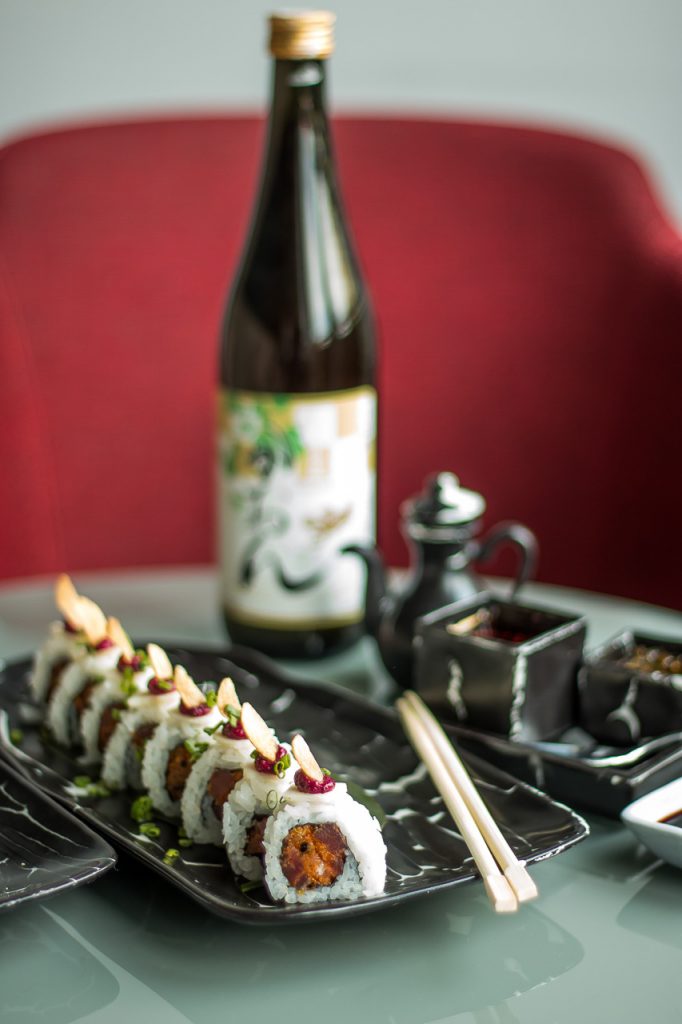
Ever since Shibuya, Food and Bar opened up in Greater Kailash – II, New Delhi it is frequented by lovers of eastern Asian comfort food. The laid back vibe, elegant setting, and lilting music ferries you to the frenetic alleys of Shibuya in Tokyo where hip cafes, bars, and restaurants add dynamism to the iconic crossing. The menu exemplifies the complexities of Pan-Asian cuisine and has been well curated by the culinary founder, Simi Kohli, and restaurateur, Jasjit Kohli.

(L-R): Rahul Bhawnani, Me, Anshuman Sood, Rohit Singh
The Gourmet passport membership program offers unmatched value with “Buy One Get One Free deal” at more than a thousand restaurants across top cities in the country. It also invites the top users and guests for exemplary fine dining experiences. An ideal place to celebrate International Sushi Day, Shibuya along with Gourmet Passport joined hands to unfurl an evening of togetherness, partake of sushi and sake pairings and sharing fun trivia with guests.
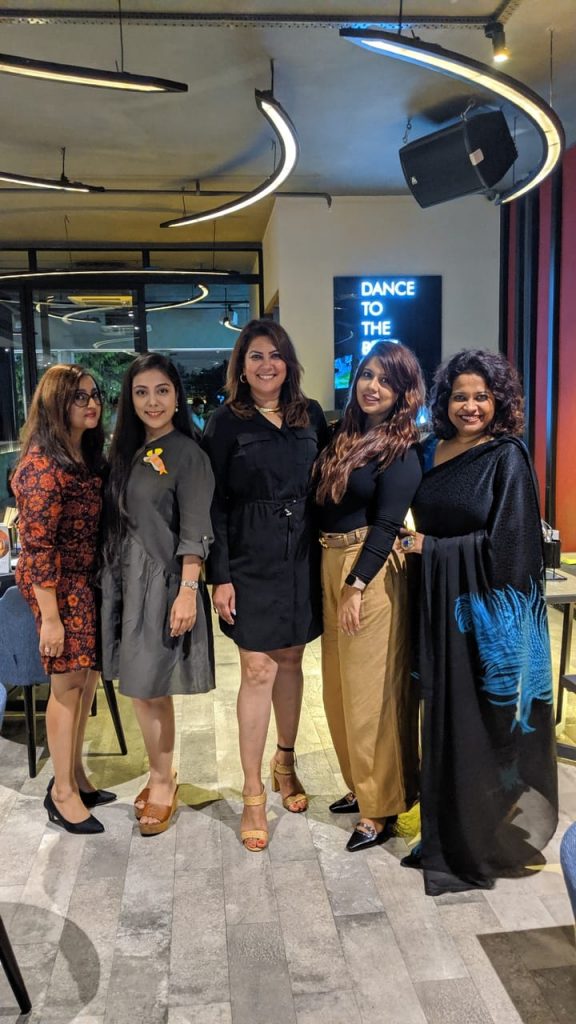
THE FIVE COURSE MEAL AND ITS PAIRINGS
Like lovers need to be in harmony with one other, the five-course meal saw the pairing of sushi with sake in a note that complimented it beautifully. Conversations revolved around the etiquette of eating sushi, the kinds of sushi and the different notes of sake.
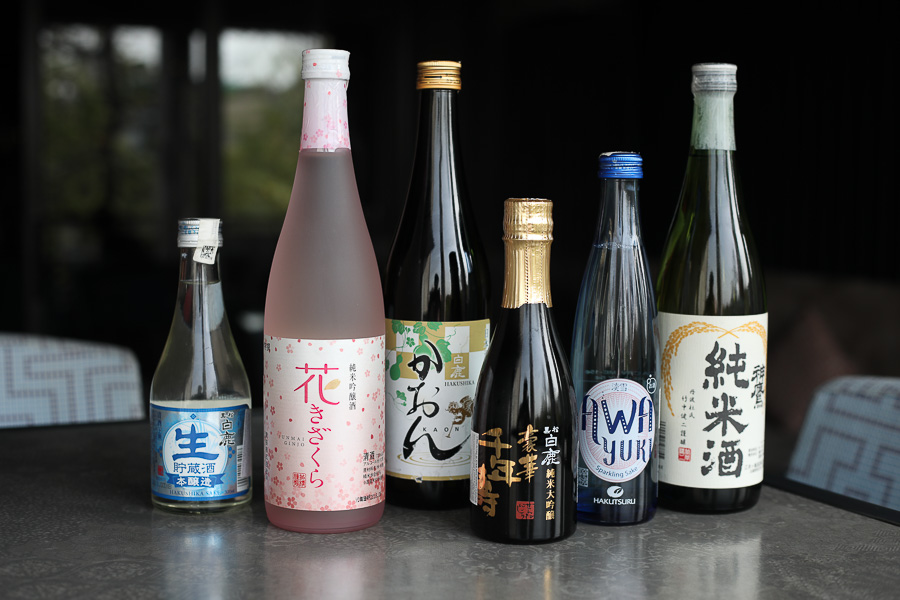
SARADA AND SUPUKOSU (Salad and Soup)
The traditional misoshuro made a perfect start. The sarada (salad) was a spinach Gomae salad with beetroot carpaccio. The contrast in flavors makes this a perfectly healthy salad for summers. The earthy and sweet beetroot slices lie on a thick bed of spinach. The top slather of black quinoa and shiny pomegranate seeds add texture and make the salad sensational.
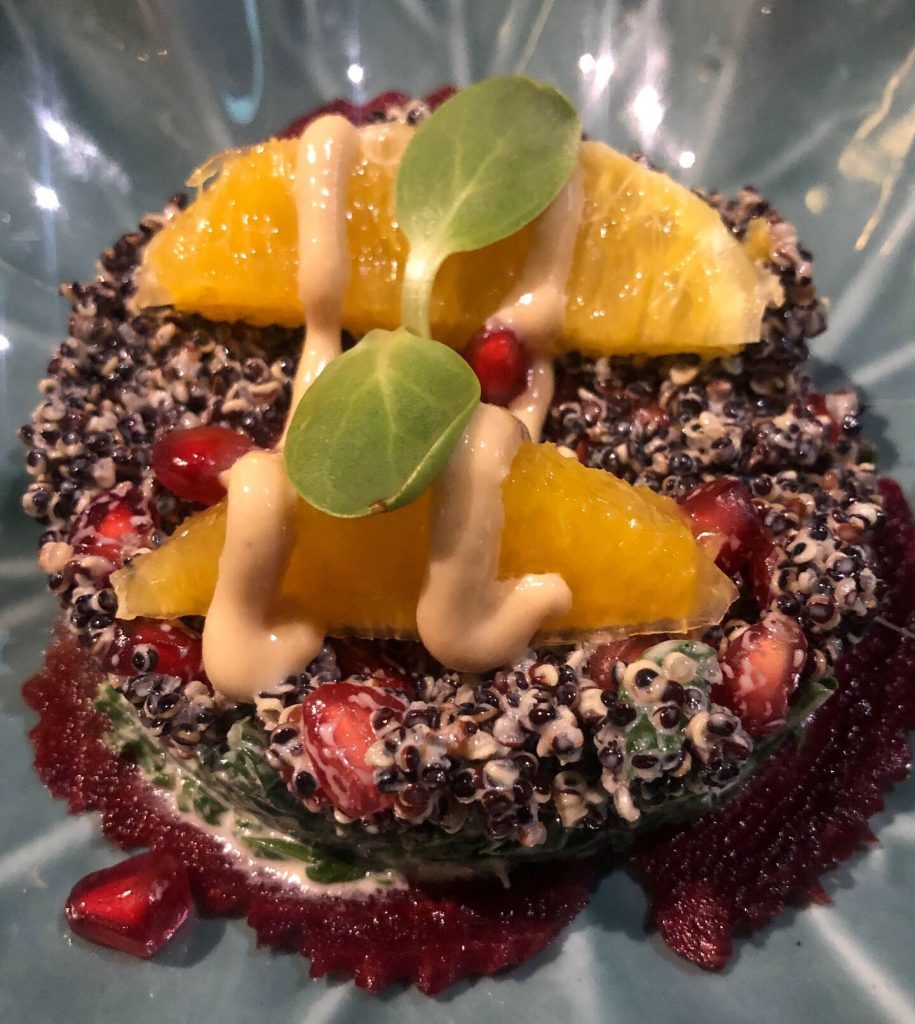
The Shiso Umebosi fizz with preserved salted plums served with a beautiful shiso herb clipped at the rim made for a refreshing palate cleanser.
SUSHI
The sushi on the platter came all dolled up in different colours. Mamenori is a thin soybean paper wrapper that replaces nori or seaweed in sushi and is available in different colours. The lemon coloured Yasai Mamenori and the green from the Spinach Ohitashi made pretty sushi offerings for the vegetarians on the table.
The flavor of the seared tuna in Flambe’ Tuna Tataki roll was phenomenal. Paired with the mildness of the avocado and a crunch of cucumber, I joined Simi in declaring this was my favourite Sushi at Shibuya. The Tuna Tartare roll ensured that the buttery tuna shone right through.
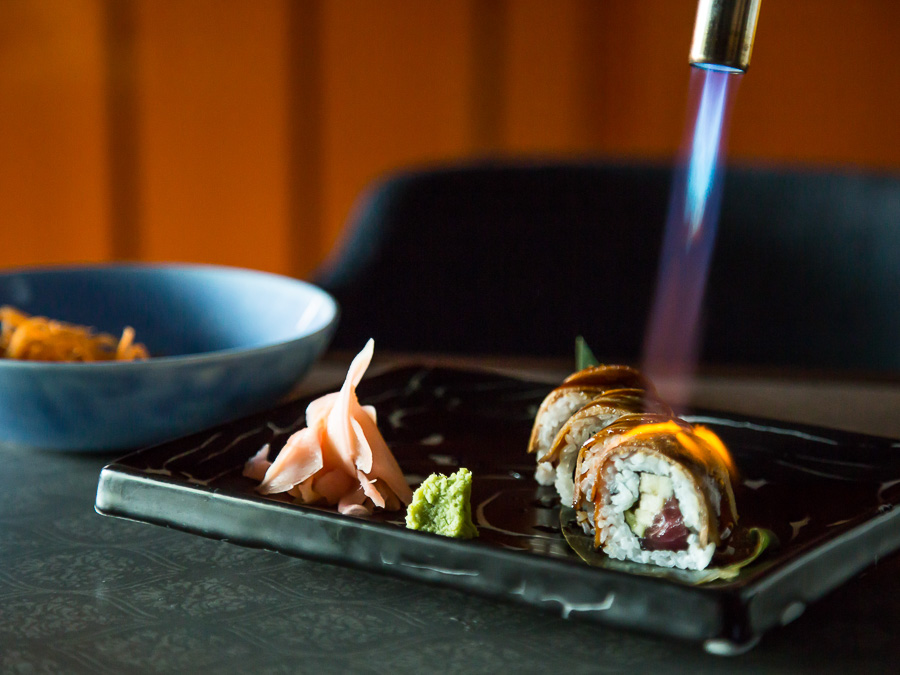
The elegant fragrance, delicate mouthfeel and distinctive flavour of Kikumasmune Kimoto Daiginjo sake, bought the sushi experience to a harmonious crescendo.
For sushi snobs who look down upon those not using chopsticks while eating sushi, here is the revelation – Sushi can be eaten with your bare hands or hashi (chopsticks) except for Sashimi.
Also mixing wasabi into the soy sauce is poor etiquette. For Sashimi, put the wasabi on the sashimi before dipping the raw fish or meat into the shoyu or soy sauce. Handling a Nigiri is a different ball game together. Place the sushi on its left side, and pick it up using your thumb, forefinger, and middle finger. Always dip the tane (sushi topping) into the shoyu and never the shari (rice). Dunking the shari in the shoyu makes it fall apart. As a result, the shoyu dish looks like the dark sea after the Titanic went down, with helpless survivors bobbing in its waters.
KORI NO UE (On the Ice)
In Shibuya, the Salmon Nigiri and Hamachi Sashimi were served on a bed of ice. This retained its freshness and was replete with rich flavors. The Yellowtail or Hamachi is traditional, well appreciated and popularly used in both sashimi and sushi in Japan. To enjoy it pleasingly firm and cold in the restaurant was taking gustatory pleasure to another level.
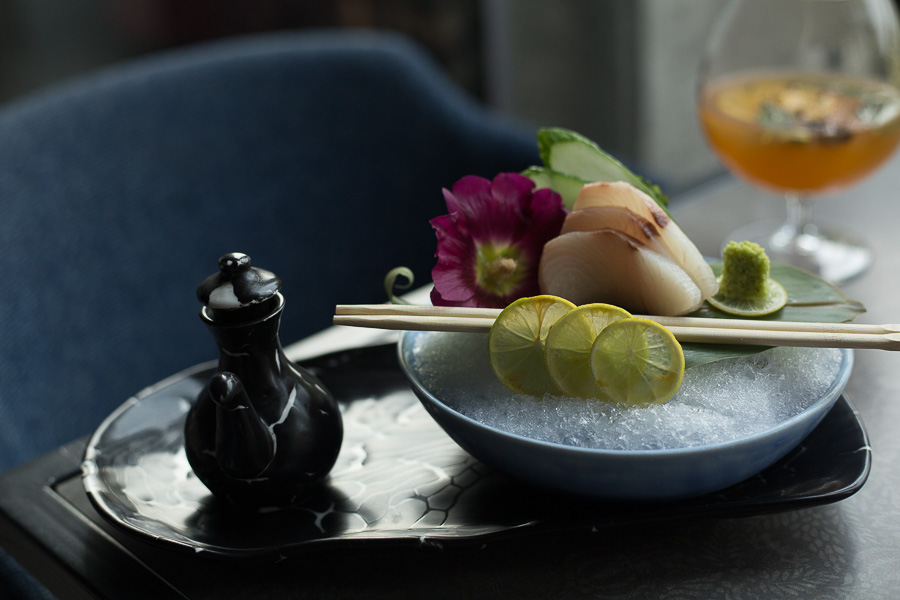
Paired with the sweetness of Hana Kazaikura Junmai Ginjo made it ideal. One sniff of Hana Kizakura and I was walking through a cherry tree orchard. Light and sweet, with apple and flower notes, I think it’s an ideal choice for sake beginners.
MEINKOSU (Main Course)
Ramen was first introduced in the Meiji era (1868 -1912). It was during this period that Japan had lifted the embargo after autarchy and was receptive to the introduction of new cuisines and cultures from abroad. The ramen got introduced by Chinatowns into Japan and it only has a 100 years old history. The popularity of this noodle soup is phenomenal, it’s both inexpensive and widely available.
Shibuya has always served its ramen as a relatively light and ungreasy broth and it doesn’t muck it up with too many add-ins. The soup is saporous, the pork nicely fatty, and the delicate noodles prove the perfect weight for the broth.
Perfectly matched with Kubata Senjyu, the sake with medium bouquet and hints of caramel and cotton candy, the hot bowl of Chef’s signature Ramen is one that can make anyone go sigh-onara. Shibuya does it real good.
DEZATO (Dessert)
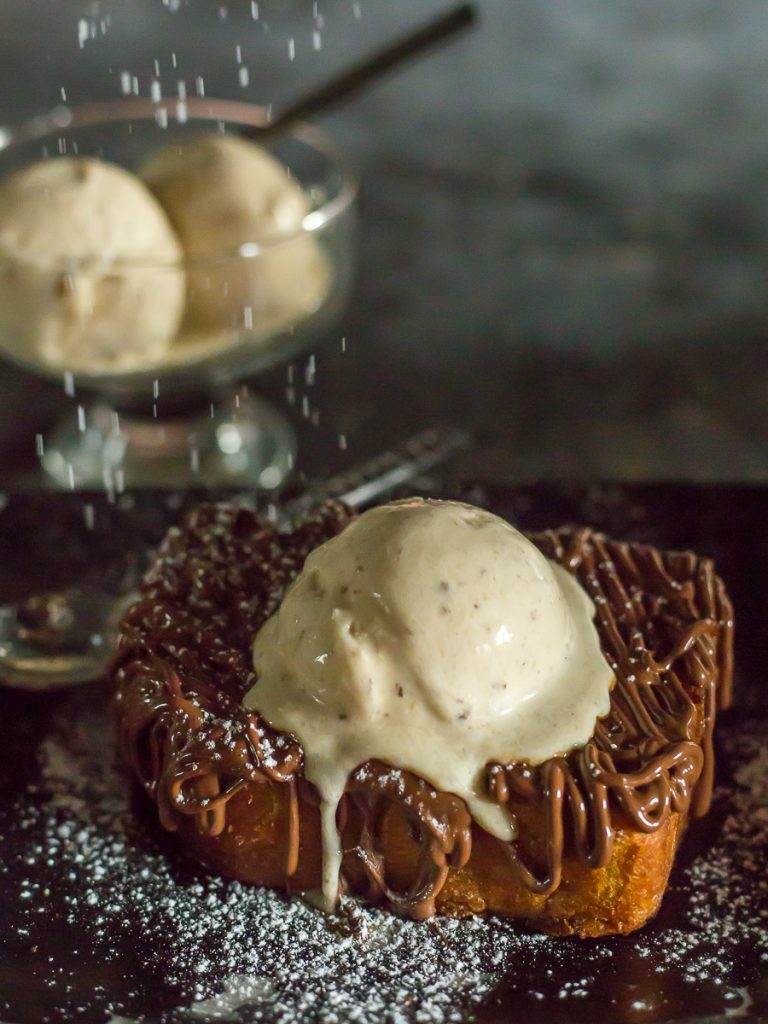
The brilliant finale came in the form of the Shibuya toast. Baked skilfully, the crisp thick bread comes topped with Nutella and a scoop of banana caramel ice cream. Guilt-fully satisfying, we liked its lightly-toasted buttery crunchiness on every single bite which strikes a delicate balance of sweetness, warmth, and brightness.
Gochisousama-deshita!
In Japan, this phrase is used after finishing a meal. Translated it literally means “It was a great deal of work preparing the meal. Thank you.”
The exclusive event at Shibuya entailing a five-course meal served with the finest sake and matched with gracious hospitality and efficient staff, left everyone with happy smiles and appreciation in their heart with the words-
“Gochisousama-deshita!” – Thank you for the meal, Shibuya! Can’t wait to be back again!

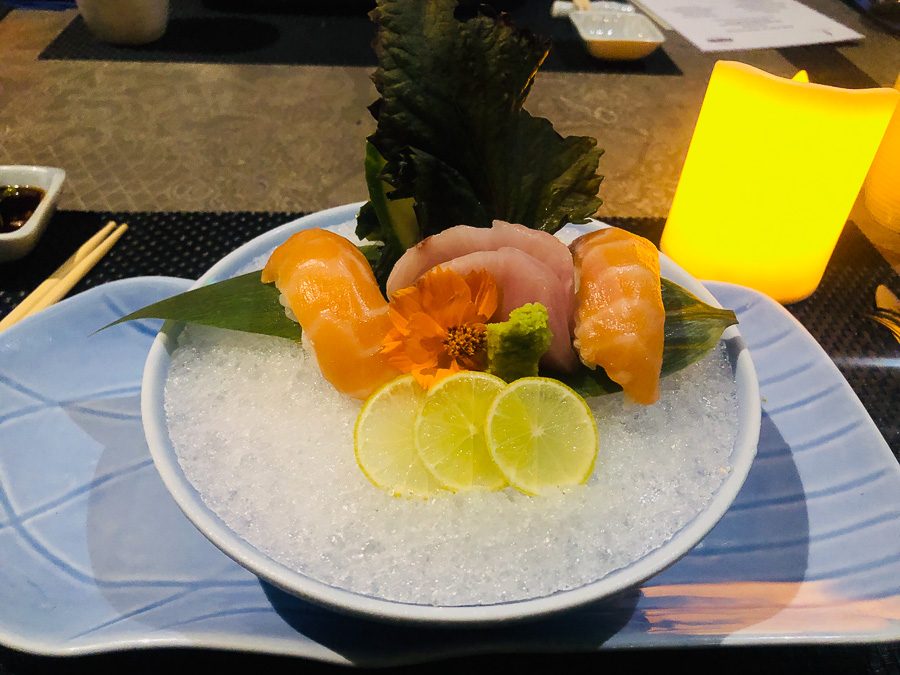


I remember how terrified I was about having Sushi for the first time ,not only because of the raw fish but also because of the etiquette involved.But once I started, it was love !
Shibuya seems to be a class apart !
Looks like a classic place for Sushi lovers. I am not particularly a sushi person but this place is indeed charming. Loved the chic decor n tasteful ambience.
This adds to my cravings.
And yes its nice to know that Sushi can be had with bare hands 🙂
Thank you!!
It’s simply beautiful how you pen your stories ♥️
Shibuya loves you back & cant wait to see you again!!!